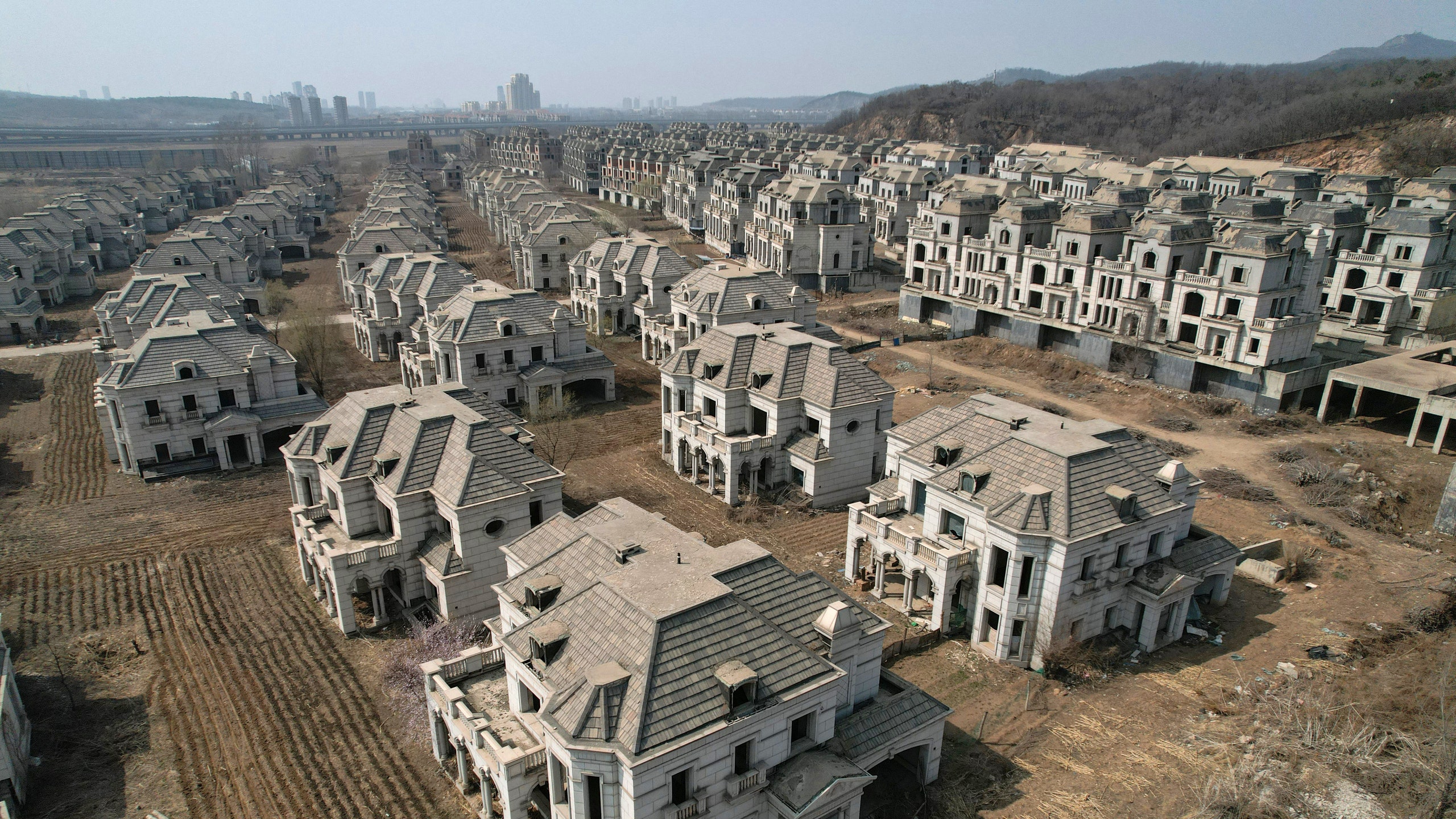Exploring the Abandoned State Guest Mansions in Shenyang
The State Guest Mansions were envisioned as the palatial homes for the upper crust of society. However, now their only residents are herds of cattle and the occasional adventure explorers meandering like ghosts around the arched verandas and stone façades of hundreds of abandoned villas. Located around the hills of Shenyang (about 400 miles northeast of Beijing), this development was initially planned by Greenland Group, a Shanghai-based real estate developer, and broke ground in 2010. More than a decade later, as reported by AFP, the project had come to a grinding halt within just two years, leaving behind the half-formed skeletons of imitative royalty.
Today, these crumbling estates remain abandoned, appearing in eerie rows that resemble an architectural cornfield. The irony of this formation becomes even more apparent as the seasons change; local farmers have begun plowing the land between the villas for future crops. The would-be garages of the abandoned mansions now serve as storage for hay bales, while modest two-rail fences corral herds of cows between properties. According to Guo, a local farmer, “These homes would have sold for millions – but the rich haven’t even bought one of them.” The specific reasons for the development’s failure have never been clearly established, although locals have their theories. Guo suggested official corruption could be at fault, noting that funding likely was cut when the government initiated crackdowns on uncontrolled developments.
The plowed fields of the development were originally expected to be the verdant gardens of the homeowners.
The Interiors: A Poignant Reflection
The interiors of the abandoned mansions are perhaps even more poignant than the exteriors. A heavy layer of dust and scraps of garbage clutter the rooms, starkly contrasting the marble floors, columns, crystal chandeliers, coffered ceilings, and intricate marquetry that once exemplified luxury. In what would have been the sales center, a model of the completed 260-villa neighborhood still remains, silently witnessing the project’s demise.
Developers had made significant progress on the homes prior to the project’s abandonment.
The Broader Context of Abandonment in China
Ghost towns are not unusual in China, where an estimated 65 million homes are left empty. For decades, the country’s economy was driven by real estate, to the point where governmental policies encouraged large-scale developments. However, changing demographics, an aging population, and rising affordability concerns have led to a supply-demand imbalance, resulting in entire cities left vacant. For instance, Thames Town, a suburb outside of Shanghai designed to emulate London, now stands virtually empty. On the other hand, Kangbashi, or “the empty city” in Ordos, is perhaps the most recognized example of this phenomenon.




